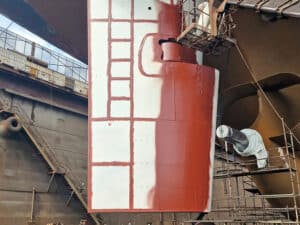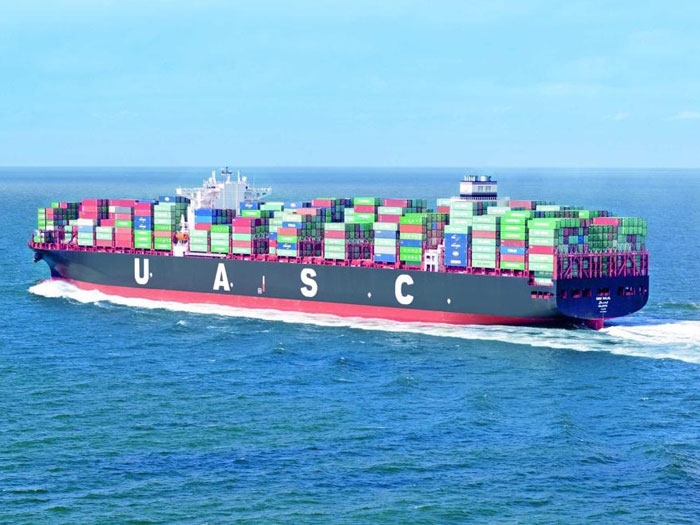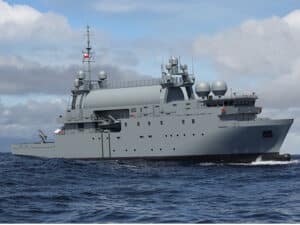
UASC newbuilds use waste heat recovery to save fuel
Written by Nick Blenkey
JULY 9, 2014 — Siemens reports that, under a contract from shipbuilder Hyundai Heavy Industries, its Drive Technologies Division is equipping 17 United Arab Shipping Company (UASC) containerships with its Siship SGM environmentally friendly drive and power generation system.
With carrying capacities of 14,500 TEU and 18,800 TEU, the UASC newbuilds are among the largest container vessels in the world. They have significant power requirements that can be optimized with highly-efficient drive solutions and an intelligent power management concept.
The Siemens system uses a waste heat recovery system (WHRS) that uses heat from the main engine exhaust to generates superheated steam from the hot exhaust gas and drive a two-stage steam turbine. An additional exhaust gas turbine can be fed with excess exhaust gas that is not needed for turbocharging. Together with the steam turbine, it drives an electric generator that generally supplies the entire on-board electric power system.
Siemens says that use of the WHRS means that fuel consumption is reduced by up to twelve per cent.
To achieve the maximum propulsion power on the shaft line, surplus electric power can be used to boost the ship’s propulsion system by means of a shaft generator and a Sinamics S120 frequency converter in the so-called power take-in (PTI) mode. The generator is mounted directly on the propeller shaft without gears and affects it directly. At low main engine load, it operates as a generator in power take-off (PTO) mode to supply the electric mains. In this case the auxiliary engines can be switched off if the total power balance allows this. This leads to more efficient electric energy generation and reduces the wear and therewith also the maintenance costs of the auxiliary engines.
All functionalities of the WHRS are controlled by a power management system which ensures optimal use of the available energy, and automatically adjusts the shaft generator operation to match actual requirements. This utilizes reserve capacity, reduces the wear on the main propulsion system and the auxiliary generators, and increases the reliability of the on-board power supply.
“Together with UASC we worked as partner to adopt and comply with the very complex technical specifications from UASC. Due to extraordinary reduction of fuel cost the total cost for container transportation will be reduced significantly. This fuel saving also results in correspondingly lower CO2 emissions” said Stefan Kraus, Head of Strategy, Marine and Shipbuilding, Siemens Drive Technologies Division.





Leave a Reply
You must be logged in to post a comment.